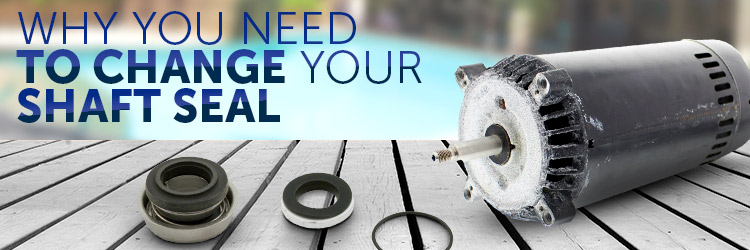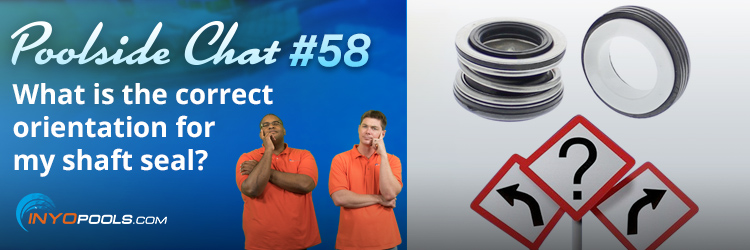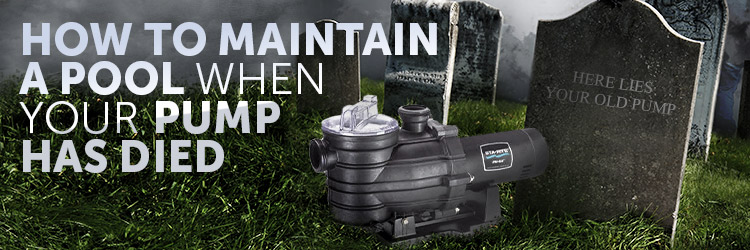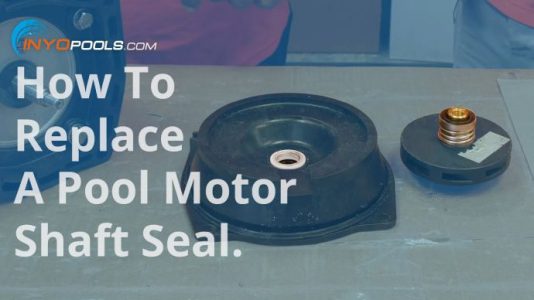The shaft seal is a two sided assembly that sits around the shaft of the motor. Its main duty is to contain all the water flowing into the pump within the housing and away from your electrical motor. As I hope you know already, water and electric motors do not play nice.

The standard issue shaft seal is made of two parts; the white ceramic seat with a rubber sleeve and a stainless steel spring with cuff lined with a rubber sleeve called the head. The head has two sides, the bottom which is metal and sits against either the impeller or in the seal plate. The other side is a black plastic or carbon ring that contacts the ceramic side to form a watertight yet virtually friction-free spinning seal. This allows the shaft to spin freely but stay bone dry.
When should I change a shaft seal?
We recommend replacing the shaft seal during any motor replacement or if there is sign of leakage. If you wish to be extra careful and you winterize your pump, we suggest replacing the shaft seal at the start of every pool season.

Why should I change the seal?
Let me answer that question with a question of my own: do you like replacing $200 pump motors every few months? I very much doubt it. If we do not change the seal when replacing the motor or immediately after noticing a leak, that scenario is likely to happen. Think of coupling a new shaft seal with a motor replacement as an insurance policy.The new seal provides peace of mind as well as protection for the new motor. A $15 part that protects a $200 motor is the best insurance deal I’ve ever heard.
 A shaft seal can also play a part in warranty claims. A.O. Smith/Century motors have a 1-year warranty that covers manufacturer’s defects but does not cover installation error. One sign of installation error is this white whirling we see in the picture to the left. The whirling is residue from water that has breached the shaft seal and begun to seep into the motor. A simple trickle from the shaft seal can lead to bad bearings. If you have not had the pleasure of hearing the screeching of a motor with bad bearings, consider yourself lucky. When the banshee scream of a bad bearings is heard it is only a matter of time before the motor will fail or freeze up. That would leave you with no motor and no warranty to replace it.
A shaft seal can also play a part in warranty claims. A.O. Smith/Century motors have a 1-year warranty that covers manufacturer’s defects but does not cover installation error. One sign of installation error is this white whirling we see in the picture to the left. The whirling is residue from water that has breached the shaft seal and begun to seep into the motor. A simple trickle from the shaft seal can lead to bad bearings. If you have not had the pleasure of hearing the screeching of a motor with bad bearings, consider yourself lucky. When the banshee scream of a bad bearings is heard it is only a matter of time before the motor will fail or freeze up. That would leave you with no motor and no warranty to replace it.
The shaft seal is under immense pressure while installed. If you don’t believe me, let me run through some numbers with you and we can see what this little guy is up against.
A pump motor rotates at 3,450 revolutions per minute (RPM) and for this example we will run our pool for 8 hours a day:
3,450 RPM ✖60 Minutes = 207,000 Revs Per Hour
then,
207,000 RPH ✖ 8 Hours = 1,656,000 Revolutions in a day
If those numbers make you dizzy, how do you think the seal feels after a long day? That is just one day, multiply that by a short 5 month swimming season and that is at least 2.5 billion revolutions.
After looking at the numbers, I hope you can better understand why we may plead for you to replace the shaft seal when installing a new motor. If your big 30 pound motor died on you, that small seal that is being put through the same paces is likely needing a replacement as well. Protect a motor and your wallet, get a pool pump shaft seal replacement.
How to replace my shaft seal?
Look no further than our own How to Guide and video: How To Replace a Pool Motor Shaft Seal. It is not the easiest of operations but for the handy homeowner it should be simple enough to save money on a service call.
If you have any further questions, please give our techs a call at 877-372-6038.












my pool pump pressure suddenly dropped from a normal 18psi to less than 5psi. i decided to replace bearings even though the pump is louder than what i remember it to be but it’s not screaming. i had difficulty removing one of the long screws and am waiting for liquid wrench to soak in. in the meantime i am focusing on the seal. my motor shaft had developed some rust under the seal. i am not sure if this added to strain on the shafts ability to spin. can you clarify if the shaft should spin freely from the seal? if the seal rusted tight to the shaft will this contribute to the lower pressure?
thank you
The shaft seal does not touch the motor shaft if it is installed correctly. The rusted shaft of the motor is the effect, not the cause. Your shaft seal is corrupted, which leads to water leaching down the shaft into the motor to damage your bearings. The bearings may have lowered the efficacy of the pump, but there are tons of other things to check in a system with low pressure.
How to Correct Low Water Pressure in Your Pool System
very nice guid